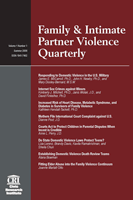Clinical Management of Stalkers and Stalking Behaviors
Author: Paul E. Mullen, D.Sc..; Michele Pathé, M.D..; Rosemary Purcell, Ph.D..
Source: Volume 04, Number 04, Spring 2012 , pp.325-339(15)

< previous article |next article > |return to table of contents
Abstract:
This article offers a succinct yet comprehensive discussion of a prevalent form of abusive dynamics—the common phenomenon of stalking. As the authors note, there is too little systematic study of stalking—who does it, how it shows up, what motivates it, and how it impacts its victims. Especially illuminating is the authors’ presentation of a system to classify stalkers based on the particular functions of the behavior (e.g., to seek intimacy, engage in a fantasy relationship, etc.). Given the commonality of this extremely troubling abusive behavior pattern (and its association in some instances with physical assault and murder), this article suggests an urgent need for a national dialogue on stalking and the generation of more effective ways of detecting, preventing, limiting, and sanctioning this form of intimate terrorism. Even more, it underscores the importance of understanding the traumatizing impacts of stalking and the need of victims for validation and mechanisms to increase their safety.Keywords: intrusive behaviors, harassing behaviors, interpersonal exchanges, therapeutic intervention, erotomanic syndromes, co-occuring substance abuse
Affiliations:
1: Victorian Institute of Forensic Mental Health; 2: Centre for Youth Mental Health, University of Melbourne; 3: Community Forensic Mental Health Service.